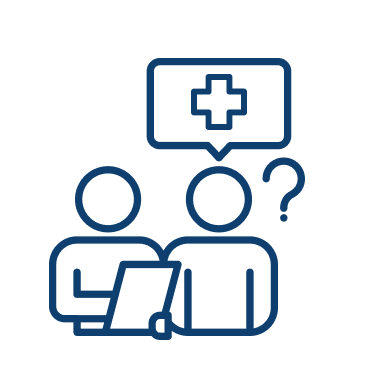Design Considerations

Develop a program design based on a facility’s experience and capacity to provide required services before, during, and after reentry
Why is this important?
Although access to opioid use disorder (OUD) services in prisons and jails is growing, many correctional facilities have not had much experience with medications for OUD (MOUDs).

- Anticipated population size
- Distance to the nearest Opioid Treatment Program (OTP)
- Facility layout
- Medication line scheduling
- Staffing configuration
- Information technology (IT) system integration
- Licensing
- Accreditation
- Medication inventory
- Associated dispensary costs
Initiating pre- and post-release case management and providing a 30-day supply of prescribed medications at release are also new activities for most correctional facilities. To offer these services, facilities will need to invest in detailed design and implementation planning.
Strategy
Develop a tailored design and implementation plan for each facility. The facility’s plan should describe relevant service models, staffing, and resource needs. Creating an effective design and implementation plan can involve the following steps:
- Identify key stakeholders to provide input and review approaches to key policy and issues — and give some thought to a broader stakeholder engagement process to support implementation.
- Conduct service mapping of each facility that will participate in the Medicaid 1115 reentry demonstration and create a facility profile with key information on the correctional facilities’ existing capacity and community resources. To do this, analyze the facility’s existing capacity for each of the required pre-release services and identify the ones they are interested in providing directly through the reentry demonstration and how they intend to provide the services they do not deliver.
- Provide a guide for facilities to use in assessing their administrative and clinical capacity to implement and manage the reentry demonstration, including assessing security considerations and physical plant constraints.
- Evaluate staffing requirements and options across 4 provider types — correctional staff, consulting practitioners, correctional health care vendors, and community providers — to determine the best fit for each reentry service.
- Determine which MOUDs (and their forms) are available locally or through telehealth before deciding which medications the facility will provide — to promote continuity between pre- and post-release medications.
- Establish a set of clinical standards for MAT that can guide practice. These standards will need to be updated regularly and should address issues like:
- Confidentiality and privacy
- Medication use during withdrawal
- Continuation of community medications (MOUDs that are prescribed by a community-based provider)
- Criteria for recommending 1 of the 3 MOUDs (methadone, buprenorphine, or naltrexone)
- Denial or limiting of MOUDs
- Voluntary use of counseling with MOUDs
- Self-referrals for clinical assessments
- Shared decision making that includes the individual in decisions about medication and dosing
- MAT and pregnancy
- Circumstances under which withdrawal management is offered to individuals5
- Establish — through contracts or other agreements — confidentiality and privacy policies regarding OUD services and sharing of information.
Examples
- Example #1
- Example #2
- Example #3
- Example #4
- Example #5
Example #1: Maine
Maine has conducted extensive community engagement with jails and prisons, correctional health care providers, community service providers, and justice-impacted community members to build relationships and trust as the state develops its justice initiatives.
Read: State Highlight: Maine, slides 6–8
Example #2: Maine
As part of Maine’s reentry demonstration planning, the state conducted site visits to all prisons and jails and met with community providers throughout Maine to understand the service capacity in each county, for each correctional facility, and community system.
Check out: State Highlight: Maine, slide 9
Example #3: Oregon
Oregon requires facilities that wish to participate in the reentry demonstration to complete a detailed readiness assessment on:
- Current capacities and processes in key functions
- Barriers to performing those functions
The state uses the results to determine what assistance the facility will need to participate.
Example #4: Oregon
Oregon has created a companion to its facility readiness assessment: the Local Health Provider Survey. The sections and services in this survey align with those in the readiness assessment and support matching local service providers with correctional facilities’ identified service gaps.
Access: Local Health Provider Survey
Example #5: New York
New York has developed a toolkit for implementing MOUD in correctional settings. It describes activities that correctional facilities can undertake to implement MOUD delivery.
Explore: Medication for Opioid Use Disorder (MOUD): Correctional Health Implementation Toolkit, especially clinical guidelines on pages 50–56